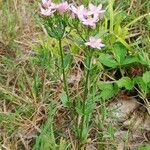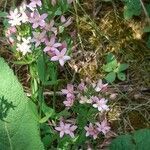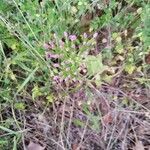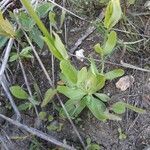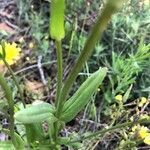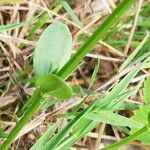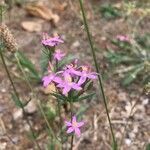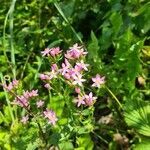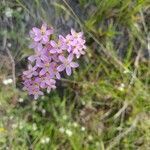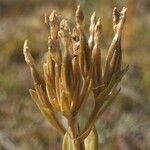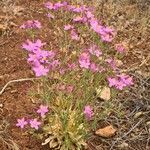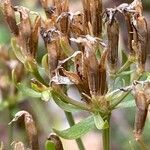Glabrous, erect annual or biennial with usually simple stems to c. 50 cm high and rosette of basal lvs persisting until after flowering. Basal lvs 1-4 × 0.5-2.2 cm, elliptic to obovate, 3-5-veined; apex rounded to ± mucronate. Cauline lvs smaller and narrower than basal, 3-veined; apex obtuse to acute. Infl. a corymbiform cyme; fls usually dense, sessile or shortly pedicellate. Bracts linear to lanceolate, > calyx. Calyx 4-6 mm long; lobes narrow-linear. Corolla 10-14 mm long; tube narrow-cylindric, white, pink towards apex; lobes 5-7 × c. 2 mm, elliptic, patent, usually pink, rarely white, obtuse or subacute. Stamens < corolla lobes. Capsule 8-10 mm long, fusiform. Seeds alveolate, minute, c. 0.2 mm long.
Erect biennial, 2–5 dm, branched above; cauline lvs lanceolate to oblong or narrowly elliptic, sessile, 2–4 cm; basal lvs smaller, petioled, forming a rosette; cymes terminating the stem and branches, trichotomously forked, corymbiform, each node bearing a pair of small linear bracts, a central fl, and 2 lateral branches; fls sessile, rose-purple; cal 3.5–5 mm; cor-tube 6–8 mm, the lobes elliptic, 5–6 mm; 2n mostly = 40. Native of Eur. and w. Asia, intr. in waste places here and there in the n. part of our range. June–Sept. (C. centaurium; C. umbellatum)
A herb. It grows 15-50 cm tall. The leaves are in a ring at the base. The leaves at the base are oval to sword shaped and 3-4 cm long by 1-2 cm wide. The leaves on the stem are 1-3 cm long and 5-15 mm wide. These do not have stalks and get smaller up the stem. The fruit is a capsule 7-9 mm long.
